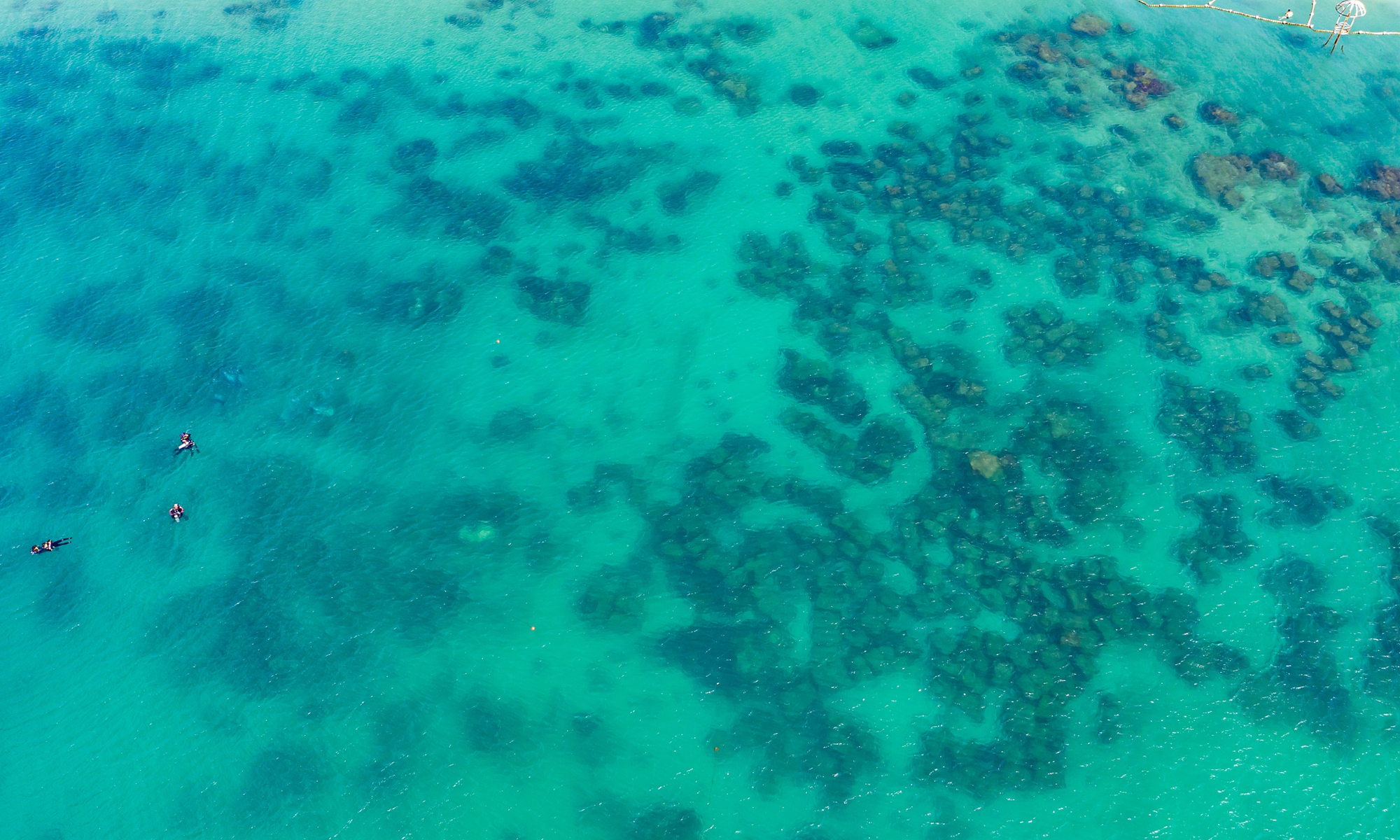
Photo: VCG
The current overall condition of China's marine ecology remains stable, with some local areas seeing improvements and the degradation trends of typical ecosystems being slowly curbed, according to a monitoring report released by the Ministry of Natural Resources on Saturday marking World Ocean Day.
As a significant maritime nation, China's marine territory covers an area of 3 million square kilometers. To deeply engage in global marine governance, the ministry launched the monitoring report to enhance national marine awareness and jointly protect marine ecosystems.
The report said that China's marine observation and monitoring capabilities have been continuously improving, forming an integrated "land-sea-air-space" observation and monitoring network that includes marine stations, radars, buoys, ships, drones, and satellite remote sensing.
The focus of China's marine monitoring is on the near-shore areas, covering the maritime areas under the country's jurisdiction, with particular attention to the distribution areas of typical ecosystems such as coral reefs and seagrass beds, as well as high-risk areas.
Wang Hua, head of the ministry's marine early warning and monitoring department, said that due to the impact of global warming, the sea surface temperature in China's near-sea area in the summer of 2023 was 0.8 C higher than the historical average, reaching a new high since the beginning of observation records.
The report also pointed out that the national coral reef ecosystem is mainly in good condition.
Wang introduced that China's coral reefs are widely distributed in the waters south of Dongshan, East China's Fujian Province. China's reef-building coral species account for 40 percent of the total number of species discovered worldwide, and there are nearly 600 species of coral reef fish.
In 2023, the coverage rate of live corals in various monitoring areas increased compared to 2020, and the overall structure of the biological community has been stable. However, some areas have experienced coral bleaching due to the warming of seawater.
The report also said that China's reef-building coral species are rich, with 16 families, 67 genera, and 393 species identified in the surveys conducted in 12 areas from 2019 to 2020. The number of reef-building coral species increases from north to south, and the degree of reef development rises.
Wang said that the ecological condition of China's islands remains stable and is slowly improving in many cases, with 64.5 percent of the monitored islands in good condition.
The report showed that from 2017 to 2023, China has continued to carry out ecological monitoring over typical islands, expanding the number of monitored islands from 130 to 344. The results show that the ecological condition of the islands was mainly classified as either "good" or "excellent."
The report pointed out that China has drawn red lines for its marine ecological conservation areas of 150,000 million square kilometers, with 352 marine nature reserves, protecting 93,300 square kilometers of sea areas. The protection targets include rare and endangered marine life and typical marine ecosystems like coral reefs, forming a blue ecological barrier.
Global Times
